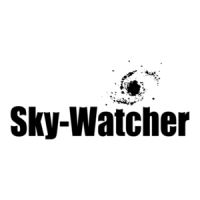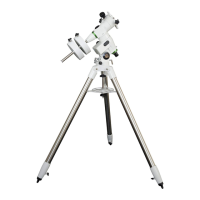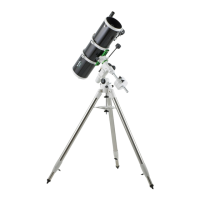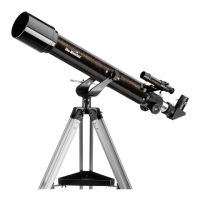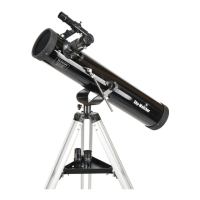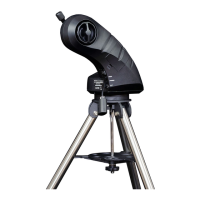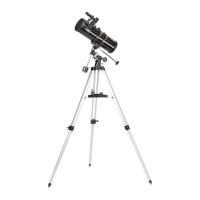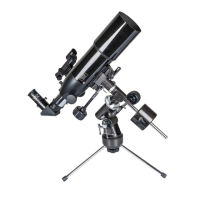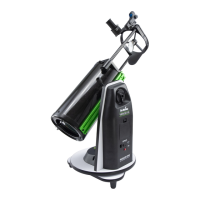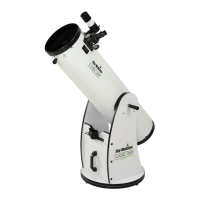36 37
PART XI : ADVANCED FUNCTIONS
• Use the left and right keys to move the cursor and use the numeric keys to ll the dig-
its with the cursor. Press the ENTER key to end setting the exposure time.
• Now the screen is changed to set the frames to be shot for this group, as shown be-
low. Use the left and right keys to move the cursor and use the numeric keys to ll in
the digits with the cursor. Press the ENTER key to end setting the frames.
4. After setting all groups of the parameters, press the ESC key to exit the conguration pro-
cess.
3. The rst row of the screenshot below indicates the index number of the group being edited.
The second row shows the exposure time of this group.
Edit Group#1
Exposure mm:ss
Edit Group#1
Repeats 000
PART XI : ADVANCED FUNCTIONS
1. Set the camera to bulb exposure mode.
2. Press the “UTILITY” shortcut key, access to the sub-menu “Camera Control \ Shoot”, and
press the Enter key.
3. The SynScan hand control will start to take batch exposure and display the progress data
on the screen, a sample screenshot is shown below:
• The top row shows the group index and the frames pending.
• The bottom row shows the remaining exposure time of the current frame.
• At the end of each frame, the SynScan hand control will wait for the preset interval
before the next exposure.
Batch Exposure
4. During the batch exposure, users can press the ESC key to suspend the operation. The
screen will display “Shoot Suspended. 1) Resume 2) Exit”. Press “1” key to resume batch
exposure or press “2” key to exit.
Shoot Suspended
1) Resume 2) Exit
Shooting#1: 003
Released mm:ss
• The SynScan hand control will return to the status of Step 2 for users to choose and
edit another group of parameters.
Note: To disable a group, set either the “Exposure” or the “Repeats” parameters to 0.
1. Using the SNAP port on the telescope mount:
Several Sky-Watcher’s equatorial mounts (such as the AZ-EQ6 GT and the EQ8) are
equipped with a SNAP port. Users can use a proper shutter release control cable to con-
nect this port to the same port on the camera.
2. Using the multi-purpose port on the SynScan hand control:
The SynScan hand control uses 2 pins (The SHUTTER and COMMON pins in the dia-
gram of Appendix 3) of its multi-purpose port to control the shutter release of a DSLR
camera. Users may use a proper shutter release cable to connect the SynScan hand
control and a camera.
1. Press the “UTILITY” shortcut key, access to sub-menu “Camera Control \ Conguration”
and press the ENTER key.
2. Edit the interval between each exposure (in MM:SS format) and press the ENTER key .
3. Use the scroll keys to browse through a list of 8 groups of parameters. A sample screen-
shot is shown below:
The leading number (“1”) is the index number of this group; the “mm:ss” data is the ex-
posure time in minutes and seconds; and the ending 3 digits number is the frames to be
shot. Press the ENTER key to pick a group and proceed to the next step.
The SynScan hand control can control a DSLR camera to do astrophotography. It can accept
8 groups of “Exposures Time - Frames” parameters, and then controls the camera to take
batch exposures without manual intervention.
To use the camera control function, the camera must be equipped with a shutter release con-
trol port and can be set to the bulb exposure mode.
11.4 Camera Control
Connecting the Camera
Setup Control Parameters
Select a Group
1. mm:ss X 000
• The initial polar alignment should not be too far off to avoid the polar alignment error in
azimuth exceeding the adjustment range of the mount.
• It is necessary to use a reticle eyepiece in the 2-Star alignment, 3-star alignment and polar
alignment process.
• Generally, the cone error in a telescope-mount setup might reduce the accuracy of this
polar alignment process. Therefore, it is recommended to reduce or eliminate the cone
error before the polar alignment process (Refer to APPENDIX 1 : ELIMINATING CONE ERROR
ON EQUATORIAL MOUNTS).
• It is recommended that the user veries the accuracy of the 2-star alignment or 3-star
alignment before starting the polar alignment process by locating several objects in dif-
ferent areas of the sky. If the pointing accuracy is low, try to use another set of alignment
stars for the 2-star or 3-star alignment process.
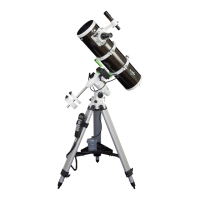
